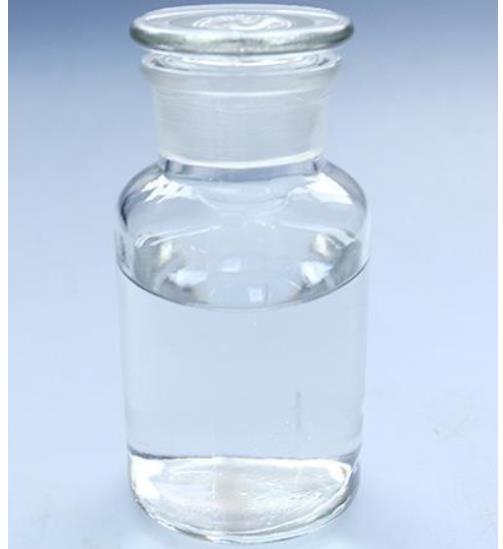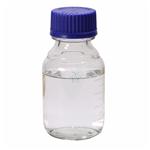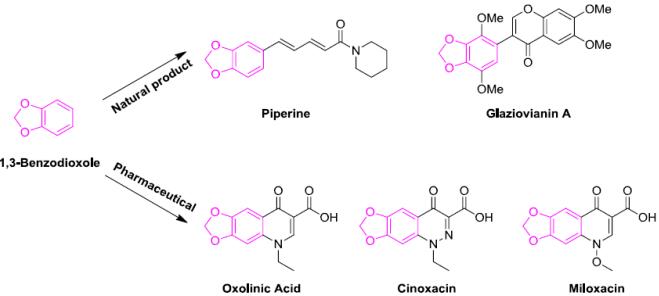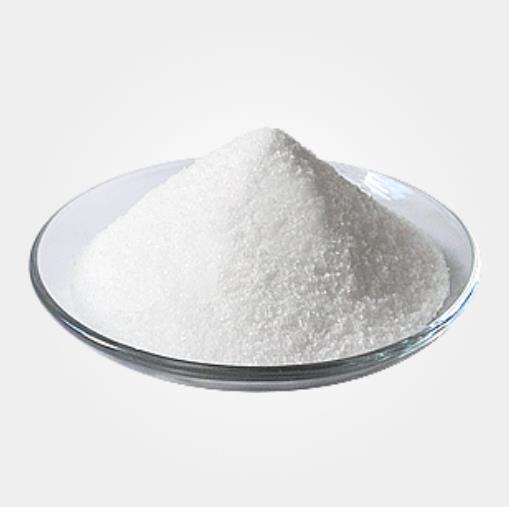Understanding 1,3-Benzodioxole
Introduction to 1,3-Benzodioxole
Since the observation that sesame oil would synergize the action of the insecticide pyrethrum, methylenedioxyphenyl (1,3-benzodioxole) derivatives have been used as insecticide synergists, There have been a number of reviews concerning the mode of action of insecticide synergists, the structure-function relationships for synergistic activity, and the ability of MDP compounds to inhibit the microsomal mixed-function oxidases of insects and mammals.
More recently new insights have been gained into the interaction of MDP compounds with microsomal enzymes, particularly cytochrome P-450.

Figure 1 Characteristics of 1,3-Benzodioxole
Synthesis of 1,3-Benzodioxole
The synthesis of 1,3-Benzodioxole typically involves the condensation of catechol with methanol in the presence of a strong acid catalyst, such as hydrochloric acid or sulfuric acid. This reaction forms the dioxole ring by methylenedioxy bridge formation, where the methanol acts as the methylene source. The process requires careful control of reaction conditions, including temperature and pH, to ensure high yield and purity of the product.
Main Components
1,3-Benzodioxole, often referred to as benzodioxole, is a chemical structure where a benzene ring is fused with a dioxole ring, forming a heterocyclic compound. The molecular formula of this compound is C7H6O2, and it is characterized by a high degree of aromaticity, which significantly enhances its stability and contributes to its reactive nature. The dioxole ring, integral to its structure, contains two oxygen atoms which are key to the compound’s unique chemical properties. These oxygen atoms are positioned adjacent to each other within the five-membered dioxole ring, making the ring more electron-rich and reactive.
This compound is often involved in various chemical syntheses, especially in the pharmaceutical industry where it serves as a precursor or an intermediate in the production of more complex molecules. The presence of oxygen atoms in the ring increases the electron density, which can facilitate substitution reactions, making 1,3-benzodioxole an important component in organic synthesis. Additionally, its simple yet versatile structure allows for a variety of derivatives to be formed, expanding its utility in different chemical applications. The understanding of such compounds is crucial in fields like medicinal chemistry, where modifications of such basic structures lead to new therapeutic agents.
Uses of 1,3-Benzodioxole
1,3-Benzodioxole is widely utilized in both the industrial and pharmaceutical sectors. It acts as a precursor or an intermediate in the creation of more complex chemical compounds, playing a crucial role in the synthesis of various pharmaceutical agents. In medicinal chemistry, derivatives of 1,3-Benzodioxole are investigated for their potential therapeutic properties, including anti-inflammatory and neuroprotective effects. Additionally, these derivatives find significant use in the fragrance industry, where they are incorporated into perfumes and other scented products due to their unique and appealing aromatic qualities. This broad range of applications highlights the versatility and importance of 1,3-Benzodioxole in different scientific and commercial fields.
Storage Methods
Proper storage of 1,3-Benzodioxole is crucial to maintain its quality and prevent degradation. The compound should be stored in a cool, dry place, away from direct sunlight and moisture. It is typically kept in airtight containers made of materials that do not react with organic solvents, such as glass or certain types of plastics. Additionally, ensuring that the storage area is well-ventilated and compliant with fire safety regulations is essential due to the compound's flammable nature.
Conclusion
It has been reported that 1,3-benzodioxole compounds haveseveral bioactivities and uses. Nishida et al. suggested that optically pure 1,3-benzodioxole agents would be a goodreagent for distinguishing D,L-amino acids. Others showedthat 1,3-benzodioxole compounds potently inhibited the 5a reductase of human and rats.
References:
[1] M. TAGASHIRA Y O. A New Antioxidative 1,3-Benzodioxole from Melissa officinalis[J]. Planta medica, 1998, 64 1: 555-558. DOI:10.1055/s-2006-957513.[2] E HODGSON R M P. Interaction of methylenedioxyphenyl (1,3-benzodioxole) compounds with enzymes and their effects on mammals.[J]. Drug Metabolism Reviews, 1974, 3 2. DOI:10.3109/03602537408993744.
Related articles And Qustion
Lastest Price from 1,3-Benzodioxole manufacturers

US $1.00/KG2025-04-21
- CAS:
- 274-09-9
- Min. Order:
- 1KG
- Purity:
- 99%
- Supply Ability:
- 10 mt

US $0.00-0.00/KG2025-04-15
- CAS:
- 274-09-9
- Min. Order:
- 1KG
- Purity:
- 99%
- Supply Ability:
- 500000kg




